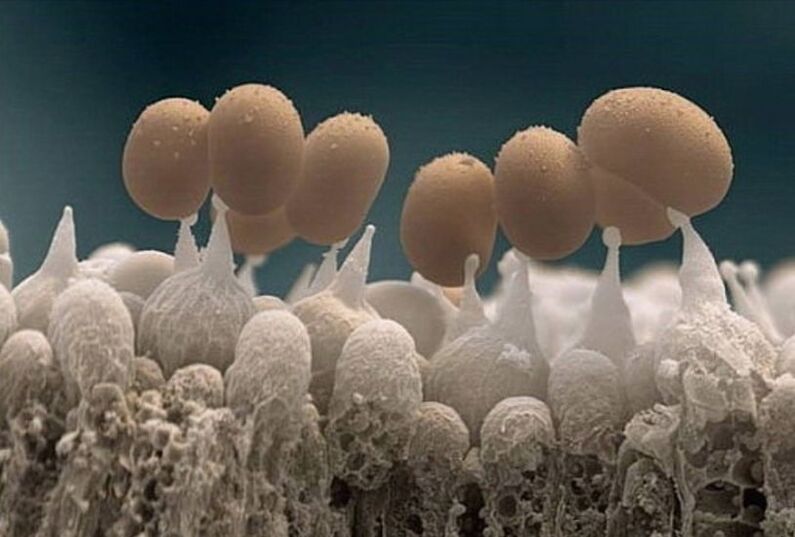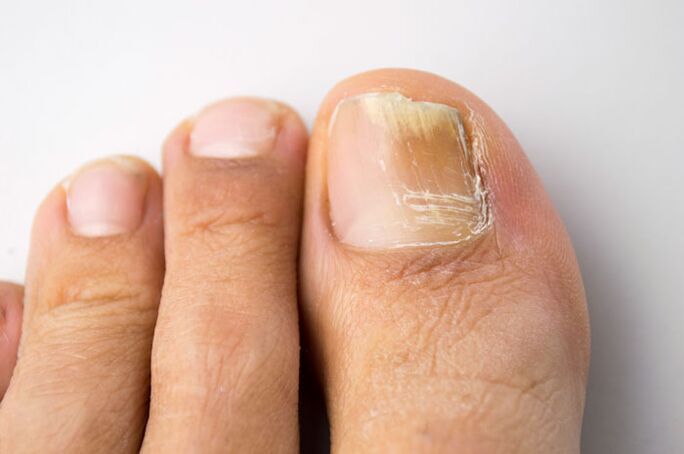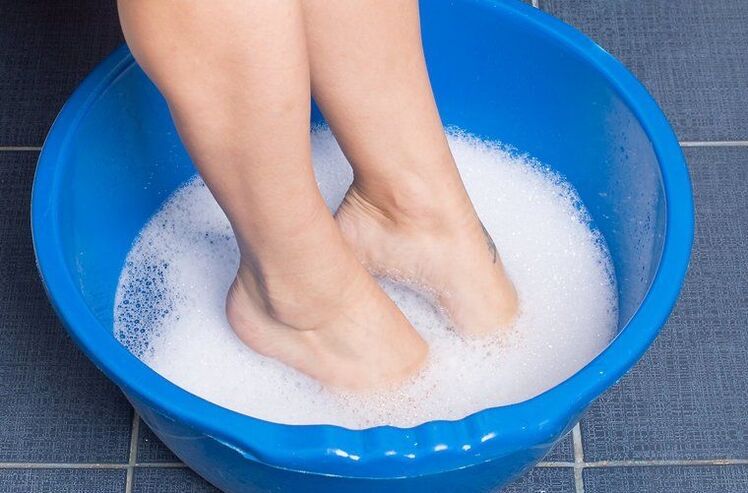With a fungal infection of the nail plates, or onychomycosis, you should contact a dermatologist or mycologist. The first doctor is specialized for any skin problem. In its competence are allergic, bacterial, viral and fungal lesions of the epidermis. A mycologist is a narrowly qualified specialist. It understands all types of fungi, treats fungal lesions of any localization, conducts research and collects statistical information.
When you need medical help
A person becomes infected with a fungus when its spores enter the skin or nail plates. You can "catch" pathogenic microorganisms in public places (sauna, swimming pool, beauty salon), by your family members, in a shoe store. Mushrooms are very fond of humid and warm environments. They are able to multiply in shoes. Most often this happens if a person suffers from sweating feet, ignores this fact or neglects the rules of personal hygiene.

When in contact with the fungus, a person is not always infected. This is preceded by a decline in immunity. Normally, the body successfully withstands the onslaught of billions of microbes every day. If defenses are depleted, you can expect trouble.
Onychomycosis is a serious infectious disease. With it, a person is in contact with pathogenic fungi for a long time. Mycotoxins with toxic properties enter his body. It also negatively affects the immune system. Get rid of nail fungus as soon as possible. The longer a person coexists with an infection, the more difficult and lengthy the treatment is. Initiated onychomycosis is difficult to cure, becomes chronic, recurrent, requires lifelong use of prophylactic agents.
It is necessary to contact doctors when the first signs of nail fungus appear, namely:
- if they are covered with small spots, dots, streaks, dim inclusions;
- if the color of the nail plate has changed - it has become yellow, brown, gray or green;
- if the plaque grows, improper cutting of the nails creates a "gateway" for infection;
- if the nails bloom - a sign of onychomycosis progression;
- if a person suffers from fungus - the fungus spreads easily on the nails from the skin;
- if there are people with onychomycosis among family members;
- if the nails have lost their luster, they become dull, heterogeneous.

The direct reasons to visit a doctor are itching, sweating, dry skin on the feet. Excessive sweating and unpleasant foot odor may indicate the development of fungus.
Who to go first
Once you have decided to see a doctor, you should first make an appointment with a dermatologist. There are dermatologists in all paid and unpaid hospitals. You can freely make an appointment with the dermatologist at the skin care center in the settlement.
The dermatologist will perform a visual examination - to identify signs of fungal development, to examine the skin for other symptoms of fungal lesions of the body. As a rule, the doctor prescribes tests (scratches from nails or skin) that confirm or rule out a fungal disease.
If the specialist's suspicions are confirmed, additional tests may be prescribed - a general and biochemical study of blood, urine and liver tests. Additional information is needed to identify the cause of the infection, to detect all possible comorbidities. Blood and liver diseases place restrictions on the use of certain medications.
A recommendation for a consultation with a mycologist is issued in advanced cases - if all toenails are damaged by onychomycosis, the onycholysis process (destruction of plaques) has begun, some nails are already missing, the patient has previously been unsuccessfully treated. A narrow profile specialist will prescribe additional tests to identify the type of pathogen. Specific medicines will be more effective for a certain type of fungus.
General principles for the elimination of onychomycosis
For the treatment of nail fungus, specialists prescribe several medications immediately. Among them:
- systemic antifungal agents;
- dosage forms operating locally;
- vitamin preparations;
- immunostimulants.
The doctor individually assesses the patient's lifestyle and hygienic culture. If necessary, he gives the necessary recommendations needed to reduce the duration of therapy.
Medical treatment must be performed with great scrupulousness. The patient should take the medication orally on time, strictly adhering to the treatment conditions recommended by the doctor. Local remedies are used until the problem is completely eliminated. As a rule, use continues for 1-2 months after the disappearance of symptoms of onychomycosis. The following are described as actual preparations:
- varnish;
- gel;
- pomada;
- Solutions.

As auxiliary methods, salt water baths are recommended, removal of plaques with the help of special emollient ointments, occasionally surgical assistance is required.
Immunostimulants and vitamins are selected according to the results of biochemical tests. In some cases, nail fungus is the first sign of serious diseases of the internal organs or hematopoietic system.
Do not discard the doctor's phone number immediately after the first consultation. The success of onychomycosis therapy depends on controlling the healing process. The doctor's consultation and testing will be repeated several times during the therapeutic course (up to 1 year). They will need to be taken again immediately after the altered nail plate restores, one month after complete healing. In order not to complicate the treatment process, the patient should refuse decorative varnish, nail extensions.

























